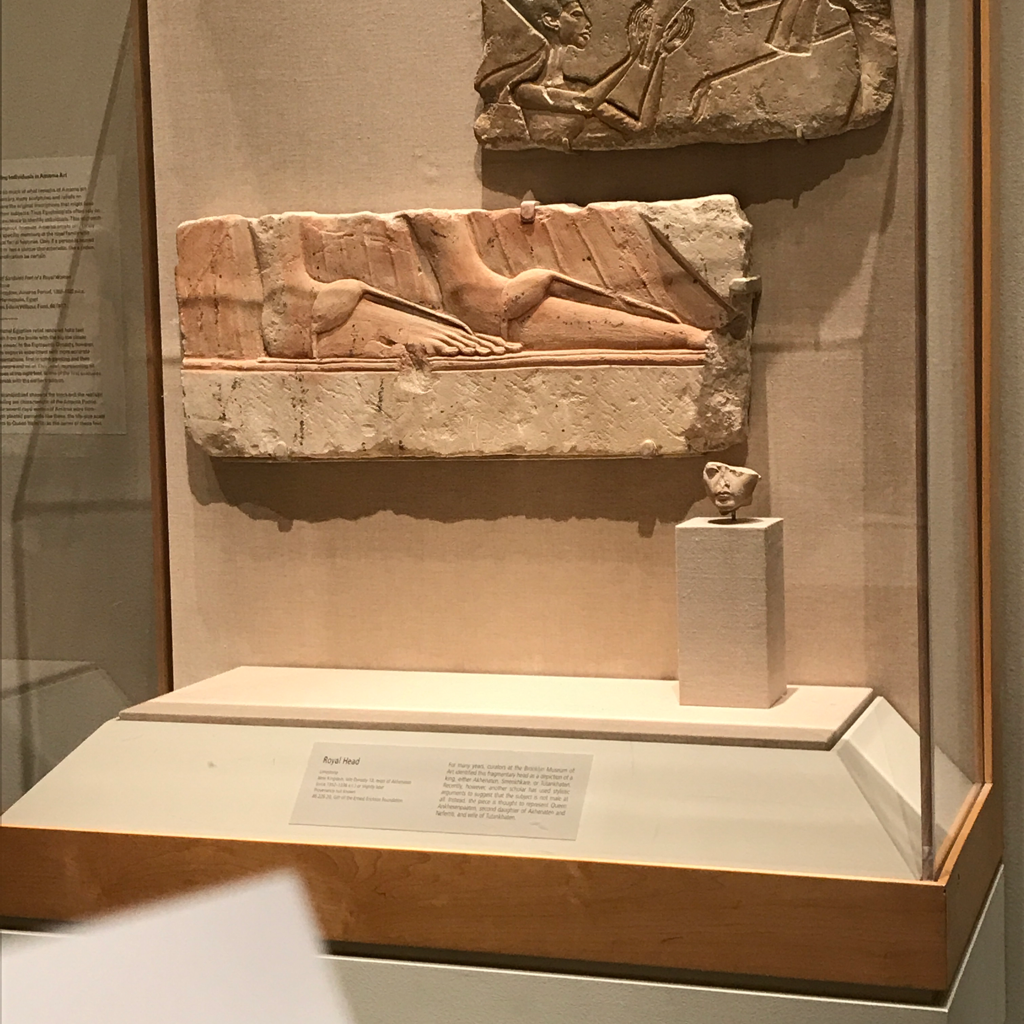

Relief of Sandaled Feet of a Royal Woman, 1352–1332 B.C.E. Limestone, pigment, 8 7/8 x 21 3/4 in. (22.6 x 55.3 cm). Brooklyn Museum, Charles Edwin Wilbour Fund, 60.197.7. Creative Commons-BY (Photo: Brooklyn Museum, 60.197.7_view1_PS2.jpg)

Relief of Sandaled Feet of a Royal Woman, 1352–1332 B.C.E. Limestone, pigment, 8 7/8 x 21 3/4 in. (22.6 x 55.3 cm). Brooklyn Museum, Charles Edwin Wilbour Fund, 60.197.7. Creative Commons-BY (Photo: Brooklyn Museum, 60.197.7_transpc004.jpg)

Relief of Sandaled Feet of a Royal Woman, 1352–1332 B.C.E. Limestone, pigment, 8 7/8 x 21 3/4 in. (22.6 x 55.3 cm). Brooklyn Museum, Charles Edwin Wilbour Fund, 60.197.7. Creative Commons-BY (Photo: Brooklyn Museum, 60.197.7_negA_bw_IMLS.jpg)

Relief of Sandaled Feet of a Royal Woman, 1352–1332 B.C.E. Limestone, pigment, 8 7/8 x 21 3/4 in. (22.6 x 55.3 cm). Brooklyn Museum, Charles Edwin Wilbour Fund, 60.197.7. Creative Commons-BY (Photo: Brooklyn Museum, 60.197.7_negB_bw_IMLS.jpg)

Relief of Sandaled Feet of a Royal Woman, 1352–1332 B.C.E. Limestone, pigment, 8 7/8 x 21 3/4 in. (22.6 x 55.3 cm). Brooklyn Museum, Charles Edwin Wilbour Fund, 60.197.7. Creative Commons-BY (Photo: Brooklyn Museum, 60.197.7_view2_PS2.jpg)
Relief of Sandaled Feet of a Royal Woman
Egyptian, Classical, Ancient Near Eastern Art
On View: Amarna Period, Martha A. and Robert S. Rubin Gallery, 3rd Floor
The standardized shape of the block and the realistic modeling are characteristic of the Amarna period. While several royal women of Amarna wore floor-length pleated garments like these, the life-size scale points to Queen Nefertiti as the owner of these feet.
- Place made: Tell el-Amarna, Egypt
- Place excavated: Hermopolis Magna (Al-Ashmunayn), Egypt






















































